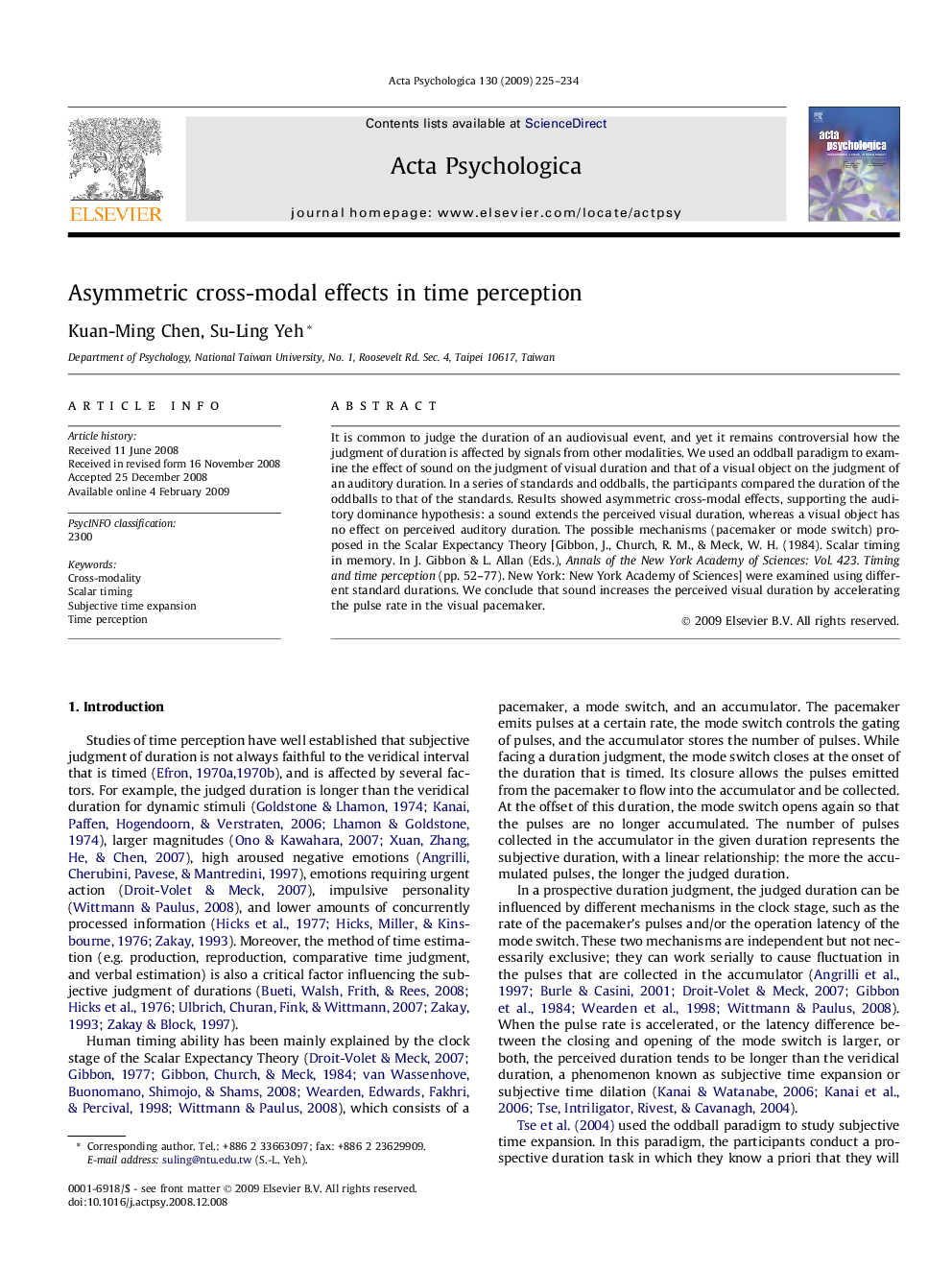| کد مقاله | کد نشریه | سال انتشار | مقاله انگلیسی | نسخه تمام متن |
|---|---|---|---|---|
| 920383 | 1473615 | 2009 | 10 صفحه PDF | دانلود رایگان |

It is common to judge the duration of an audiovisual event, and yet it remains controversial how the judgment of duration is affected by signals from other modalities. We used an oddball paradigm to examine the effect of sound on the judgment of visual duration and that of a visual object on the judgment of an auditory duration. In a series of standards and oddballs, the participants compared the duration of the oddballs to that of the standards. Results showed asymmetric cross-modal effects, supporting the auditory dominance hypothesis: a sound extends the perceived visual duration, whereas a visual object has no effect on perceived auditory duration. The possible mechanisms (pacemaker or mode switch) proposed in the Scalar Expectancy Theory [Gibbon, J., Church, R. M., & Meck, W. H. (1984). Scalar timing in memory. In J. Gibbon & L. Allan (Eds.), Annals of the New York Academy of Sciences: Vol. 423. Timing and time perception (pp. 52–77). New York: New York Academy of Sciences] were examined using different standard durations. We conclude that sound increases the perceived visual duration by accelerating the pulse rate in the visual pacemaker.
Journal: Acta Psychologica - Volume 130, Issue 3, March 2009, Pages 225–234